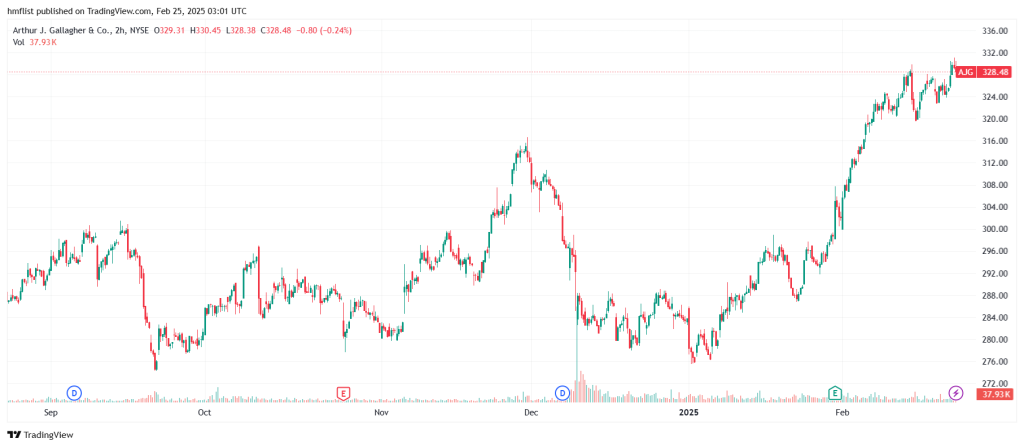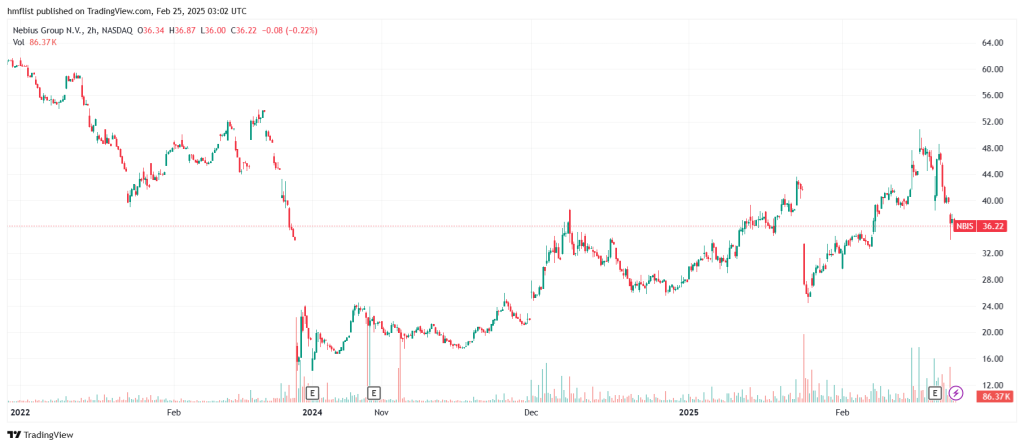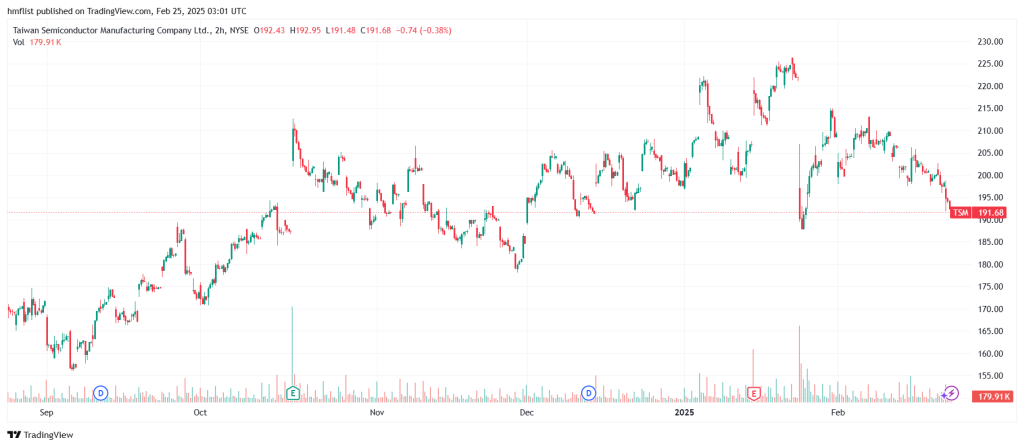Despite recent pullbacks, tech stocks continue to command premium valuations, finding genuine value opportunities has become increasingly challenging. The S&P 500 and Nasdaq Composite have retreated from their all-time highs amid concerns about economic slowdown, tariff tensions, persistent inflation, and potential interest rate hikes.
Nevertheless, “in the know” investors are still uncovering compelling tech companies trading at attractive valuations relative to their growth prospects. These three undervalued tech stocks offer potential upside without the frothy multiples that characterize much of the sector today.
1. Applied Materials (AMAT): The Semiconductor Kingmaker
As one of the world’s leading semiconductor equipment manufacturers, Applied Materials sits at the heart of the AI revolution without carrying the sky-high valuations of chipmakers themselves.
From fiscal 2019 to 2024, Applied Materials delivered impressive results, growing revenue at a compound annual growth rate (CAGR) of 13% and earnings per share at 25% CAGR. This remarkable performance occurred despite pandemic disruptions, supply chain challenges, and escalating trade tensions with China.
Recent developments further strengthen the investment case. In February 2025, Applied Materials reported better-than-expected Q1 results, with CEO Gary Dickerson noting that “demand for our advanced packaging solutions hit an all-time high as AI system designers look to optimize total system performance and power efficiency.” The company’s AI-related revenue streams now account for approximately 35% of its total business, up from 25% just a year ago.
Looking ahead, analysts project Applied Materials’ revenue and EPS to grow at CAGRs of 6% and 8%, respectively, through fiscal 2027. While export restrictions to China present near-term headwinds, the company’s long-term growth trajectory remains intact, driven by:
- Escalating demand for AI accelerator chips requiring advanced manufacturing equipment
- New energy-efficient chip designs for data centers and mobile devices
- The transition to more complex memory architectures (including HBM)
Trading at just 16 times forward earnings and 4 times next year’s sales, Applied Materials offers compelling value in an otherwise expensive sector. The company’s commitment to shareholder returns is evident in its forward dividend yield of 1% and ongoing share repurchase program, which reduced outstanding shares by 3.2% over the past year.
2. Lumen Technologies (LUMN): An AI Infrastructure Dark Horse
Lumen Technologies (formerly CenturyLink) appeared to be on life support when its stock dipped below $1 in June 2024. The company’s focus on wireline connections over wireless expansion had backfired spectacularly, with declining business wireline revenue overwhelming the growth in its fiber segment.
However, a series of transformative AI infrastructure deals has breathed new life into this struggling telecom provider. Major cloud players including Microsoft, Google, and Amazon have engaged Lumen to upgrade their data centers with fiber optic infrastructure capable of handling the massive bandwidth requirements of modern AI systems.
These multi-year contracts reached a cumulative value of $8.5 billion by the end of 2024, providing Lumen with a critical lifeline. According to CEO Kate Johnson in a February 2025 interview with CNBC, “The AI wave created an urgent need for the exact type of fiber infrastructure we’ve been building for years. Our nationwide network puts us in a unique position to serve hyperscalers’ expanding AI compute requirements.”
Recent research from JP Morgan suggests Lumen’s AI-related revenue could exceed $2.5 billion annually by 2027, potentially representing over 20% of the company’s total revenue mix. The firm recently upgraded Lumen to “neutral” from “underweight,” citing stabilizing fundamentals and better-than-expected execution on AI partnerships.
While analysts still project revenue declines through 2027 and continued losses, the trajectory is improving. With an enterprise value of $20.4 billion representing less than twice its projected 2025 revenue, Lumen offers a compelling risk-reward profile for investors willing to bet on its AI-driven turnaround.
3. DigitalOcean (DOCN): The SMB Cloud Provider Finding Its Niche
DigitalOcean has carved out a profitable niche by providing cloud infrastructure services tailored specifically to small and medium-sized businesses (SMBs). Unlike enterprise-focused giants like AWS and Azure, DigitalOcean offers simplified pricing, developer-friendly documentation, and right-sized services for smaller organizations.
The company’s growth story is impressive: from 2020 to 2024, DigitalOcean grew revenue at a 25% CAGR while achieving profitability in 2023. Its net income and EPS more than quadrupled in 2024, validating its business model and demonstrating the company’s ability to scale efficiently.
A key catalyst came in 2023 when DigitalOcean acquired Paperspace, adding GPU-powered AI capabilities to its service lineup. This strategic move is already bearing fruit, with AI-related services growing at 3x the rate of the company’s core offerings, according to DigitalOcean’s Q4 2024 earnings call.
The company announced in March 2025 the expansion of its AI compute offerings with new GPU options featuring NVIDIA’s latest chips. CEO Paddy Srinivasan emphasized that this move “democratizes AI for the millions of developers and businesses that have been priced out of the AI revolution by hyperscaler complexity and costs.”
Looking forward, analysts expect DigitalOcean’s revenue and EPS to grow at CAGRs of 14% and 19%, respectively, through 2027. While growth is moderating as the business matures, the company’s focus on the underserved SMB cloud market and expanding AI capabilities provide meaningful differentiation.
At 22 times forward adjusted earnings and 4 times next year’s sales, DigitalOcean represents an attractive value proposition in the cloud computing space, where competitors often trade at substantially higher multiples.
The Bottom Line
While many investors chase high-flying tech names at increasingly stretched valuations, these three companies offer exposure to important technology trends at reasonable prices. Applied Materials provides critical infrastructure for the semiconductor industry, Lumen is positioning itself as a vital AI connectivity provider, and DigitalOcean continues to expand its foothold in the SMB cloud market.
For value-oriented investors seeking tech exposure without premium prices, these three stocks deserve serious consideration in today’s challenging market environment.













